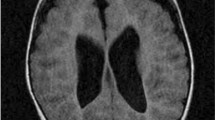Abstract
Objective
To explore the incidence and independent risk-factors of secondary carnitine deficiency in Chinese children with epilepsy on valproate monotherapy.
Methods
The free carnitine and acylcarnitines levels in 299 children with epilepsy on valproate monotherapy between June 2014 and September 2015 were compared with age- and sex-matched 299 healthy controls.
Results
Children with valproate monotherapy had lower free carnitine levels [23.86 (10.60) μmol/L] than the controls [36.37 (9.37) μmol/L] (P<0.01). Most acylcarnitines were significantly lower in children with valproate monotherapy than controls. 63 children (21.1%) with epilepsy had carnitine deficiency; 54 were asymptomatic. Female gender (OR 2.1), high alanine aminotransferase levels (OR 1.0) and long duration of VPA treatment (1-12 mo) (OR 1.9) were independent risk factors for secondary carnitine deficiency induced by VPA.
Conclusions
Carnitine deficiency with valproate is more likely in females, those with transaminitis, and those receiving the drug for 1–12 months.
Similar content being viewed by others
References
Nakashima H, Oniki K, Nishimura M, Ogusu N, Shimomasuda M, Ono T, et al. Determination of the optimal concentration of valproic acid in patients with epilepsy: A population pharmacokinetic-pharmacodynamic analysis. PLoS One. 2015; 10:e0141266.
Silva MF, Aires CC, Luis PB, Ruiter JP, IJlst L, Duran M, et al. Valproic acid metabolism and its effects on mitochondrial fatty acid oxidation: a review. J Inherit Metab Dis. 2008;31:205–16.
Lheureux PE, Hantson P. Carnitine in the treatment of valproic acid-induced toxicity. Clin Toxicol (Phila). 2009;47:101–11.
El-Hattab AW, Scaglia F. Disorders of carnitine biosynthesis and transport. Mol Genet Metab. 2015;116:107–12.
De Vivo DC, Bohan TP, Coulter DL, Dreifuss FE, Greenwood RS, Nordli DR Jr, et al. L-carnitine supplementation in childhood epilepsy: current perspectives. Epilepsia. 1998;39:1216–25.
Hirose S, Mitsudome A, Yasumoto S, Ogawa A, Muta Y, Tomoda Y. Valproate therapy does not deplete carnitine levels in otherwise healthy children. Pediatrics. 1998;101:E9.
Fung EL, Tang NL, Ho CS, Lam CW, Fok TF. Carnitine level in Chinese epileptic patients taking sodium valproate. Pediatr Neurol. 2003;28:24–7.
Cansu A, Serdaroglu A, Biberoglu G, Tumer L, Hirfanoglu TL, Ezgu FS, et al. Analysis of acylcarnitine levels by tandem mass spectrometry in epileptic children receiving valproate and oxcarbazepine. Epileptic Disord. 2011;13:394–400.
Fukuda M, Kawabe M, Takehara M, Iwano S, Kuwabara K, Kikuchi C, et al. Carnitine deficiency: Risk factors and incidence in children with epilepsy. Brain Dev. 2015;37:790–6.
Beghi E, Bizzi A, Codegoni AM, Trevisan D, Torri W. Valproate, carnitine metabolism, and biochemical indicators of liver function. Collaborative Group for the Study of Epilepsy. Epilepsia. 1990;31:346–52.
Moreno FA, Macey H, Schreiber B. Carnitine levels in valproic acid-treated psychiatric patients: a cross-sectional study. J Clin Psychiatry. 2005;66:555–8.
Kutlu O, Cansu A, Karagüzel E, Gürgen SG, Koç O, Gür M, et al. Effect of valproic acid treatment on penile structure in prepubertal rats. Epilepsy Res. 2012;99:306–11.
Surendradoss J, Chang TK, Abbott FS. Assessment of the role of in situ generated (E)-2, 4-diene-valproic acid in the toxicity of valproic acid and (E)-2-ene-valproic acid in sandwich-cultured rat hepatocytes. Toxicol Appl Pharmacol. 2012;264:413–22.
Nakamura M, Nagamine T. The effect of carnitine supplementation on hyperammonemia and carnitine deficiency treated with valproic acid in a psychiatric setting. Innov Clin Neurosci. 2015;12:18–24.
Mock CM, Schwetschenau KH. Levocarnitine for valproic-acid-induced hyperammonemic encephalopathy. Am J Health Syst Pharm. 2012;69:35–9.
Author information
Authors and Affiliations
Corresponding author
Rights and permissions
About this article
Cite this article
Li, Q., Song, W. & Jin, H. Carnitine Deficiency in Chinese Children with Epilepsy on Valproate Monotherapy. Indian Pediatr 55, 222–224 (2018). https://doi.org/10.1007/s13312-018-1322-4
Received:
Revised:
Accepted:
Published:
Issue Date:
DOI: https://doi.org/10.1007/s13312-018-1322-4




